Para todo mal, Mezcal; para todo bien también.
Si no hay remedio, litro y medio.
Amigos! Last week I shared the amazing recipe for pozole rojo from chef Hector Contreras on my R&D chef team, and the week before that I told you about the Mexican-Chinese restaurant I have in Las Vegas called China Poblano.
Today? I want to stay in Mexico, and tell you about one of the most incredible spirits in the world…those that are made from the agave plant. This is a story of history and culture, agriculture and sustainability.
Agave is a distinctive and beautiful succulent plant native to the Americas, especially Mexico. Throughout Mesoamerican history, it’s been used for many things—textiles for clothing, to make rope, eaten as food, to make musical instruments, to make syrup, and to make a fermented drink known to many as pulque. From a time before the Spanish (my people) came and colonized Mexico, agave—called metl in the native Nahuatl language—has been sacred.
And of course, of the many things (mostly bad, I’ll admit) that Spaniards brought to the Americas was the knowledge of distillation. This process, which I told you about a few weeks ago when we were talking about arak and ouzo, was invented more than a thousand years ago in the Middle East, and traveled around the world, changing wine into brandy, beer into whiskey, and ultimately turning pulque into the distilled spirits we all know today, tequila and mezcal.
You have probably heard of tequila, and maybe you’ve tasted it. Maybe many years ago (or this past weekend!) you had a shot or two at the bar? Maybe you’ve had a margarita—or even made my favorite recipe for the Salt Air Margarita, which calls for unaged tequila? The super trendy Ranch Water? Everyone loves tequila…but do you know what it is? And what about mezcal?
Here’s a rule to understand before we keep going: All tequila is mezcal, but all mezcal is not tequila. They are both made in Mexico, and distilled from the cooked heart of the agave plant (mezcal comes from the Nahuatl words metl and ixcalli, for oven-cooked agave), which extracts the plant’s natural sugar and gets it ready to be fermented and distilled. Mezcal’s definition ends there—it can be made from any number of varieties of agave, and made in one of nine states around the country—though more than 90% is made in the state of Oaxaca, in the south. There are dozens of types of agave plants that can be made into mezcal, both wild and farmed, and each one will give the final drink its own distinct flavors and aromas.
Tequila is much more restricted than mezcal. It’s named after the city of Tequila in the state of Jalisco, in the country’s west, and needs to be made either in Tequila or in one of five recognized states. It has very strict rules about the agave itself—it can only be made from the Blue Weber Agave, a plant high in sugar and easy to grow, making the production of tequila more consistent overall than mezcal, whose multiple varieties make it less predictable, and less profitable overall. The agaves are harvested, cooked, fermented, and distilled after growing for 7 or more years.
I love both tequila and mezcal, and I think there’s a place for both. Tequila, obviously, is what I love in margaritas. It’s not something I usually drink on its own (though there are some sipping tequilas I love), but it’s perfect in cocktails. Of course, there are different styles of tequila, based on how long it’s been aged—from unaged blanco to extra añejo, which has been aged in barrels for at least three years. Each has its time and place.
Mezcal is an amazing and very different thing, there is so much variety in the world of mezcals, speaking to the type of agave plant, the terroir of the land it was grown, the work of the mezcalero, and the work of the jimadores, the harvesters who identify ripe agaves and harvest them with skill that they’ve developed over a lifetime. Agave plants that are grown for mezcal—or the wild varieties that are harvested—can ripen for up to 35 years, half a human life. Just imagine, the agave of the bottle of mezcal you are drinking today might have been planted before you were born (or when I was in my 20s, drinking a shot of tequila now and again!)
Maybe you can think about mezcal as a sort of “reverse whiskey”—we think about whiskey, and especially scotch, in terms of how long it’s been aged, but we don’t think about how much time the barley was growing. With mezcal, the agave plants might have lived for decades before being cooked and fermented—an incredible lifetime, distilled into a bottle. It’s a beautiful thing to think about.
But I’ll tell you something that we also need to think about…today there is a crisis of agave. We are drinking too many agave spirits, and not understanding the root, the time it takes, the intensive processes, and the generations that go into each bottle. I always say that wine and spirits are agricultural products, just like the fruits and vegetables and meat and seafood we eat—so I think we should respect agave spirits as we do the things we put on our plate. Here’s one small example…the wild agaves that are harvested for some mezcals are pollinated by passing animals—hummingbirds, bees, bats. When a field is over-harvested, it creates a dead zone in the animals’ migratory patterns, a place where they no longer are able to eat. Growers understand these patterns, but when consumers keep asking for more, more, more…the animals are the ones who suffer, and the farmers, harvesters, and producers who rely on these plants for their own survival.
For this reason, we need to be a bit more careful and think about sustainability, about keeping these drinks not just for ourselves but making sure they are preserved for future generations. Maybe it’s like my friends Bartholomew Jones and Renata Henderson told us a few weeks ago about honoring our root, being more thoughtful about what we consume.
At Oyamel, my Mexican restaurant in Washington, DC, we see ourselves as an embassy for mezcal and tequila—my team are ambassadors of agave. We are trying to help people be thoughtful about agave spirits, to understand the history, the culture, and the agriculture of these drinks. Amy Mila Hosseinnian, who leads the beverage team at Oyamel, loves agave spirits…she’s an amazing ambassador of agave. She even created her own bottling of tequila with Maestro Dobel—she loves it because its salinity and acid reminds her of the salt air that goes on our very famous margaritas.
She’ll be at Oyamel for our upcoming Agave Festival, running from February 29 to March 17…if you happen to be in DC, stop by and ask her what she loves (talk to her about pechuga, the amazing mezcals that are distilled with different meats and spices…we even have a mezcal made from jamón Ibérico, which I helped make with an old mezcal friend Ron Cooper of Del Maguey many years ago!). Or if Amy is busy (she’s always busy!), talk to any one of our agave ambassadors…they will be very happy to tell you about the sacred spirits of Mexico.
And the quote above, for those of you who don’t read Spanish (and didn’t Google it!) For everything bad, mezcal, for everything good also. If it doesn’t help, a liter and a half. Well, a liter and a half of mezcal might not be right for everyone, but there is something magical about the spirit that comforts us when things don’t go right, and cheers us when things do.
Salud, friends.




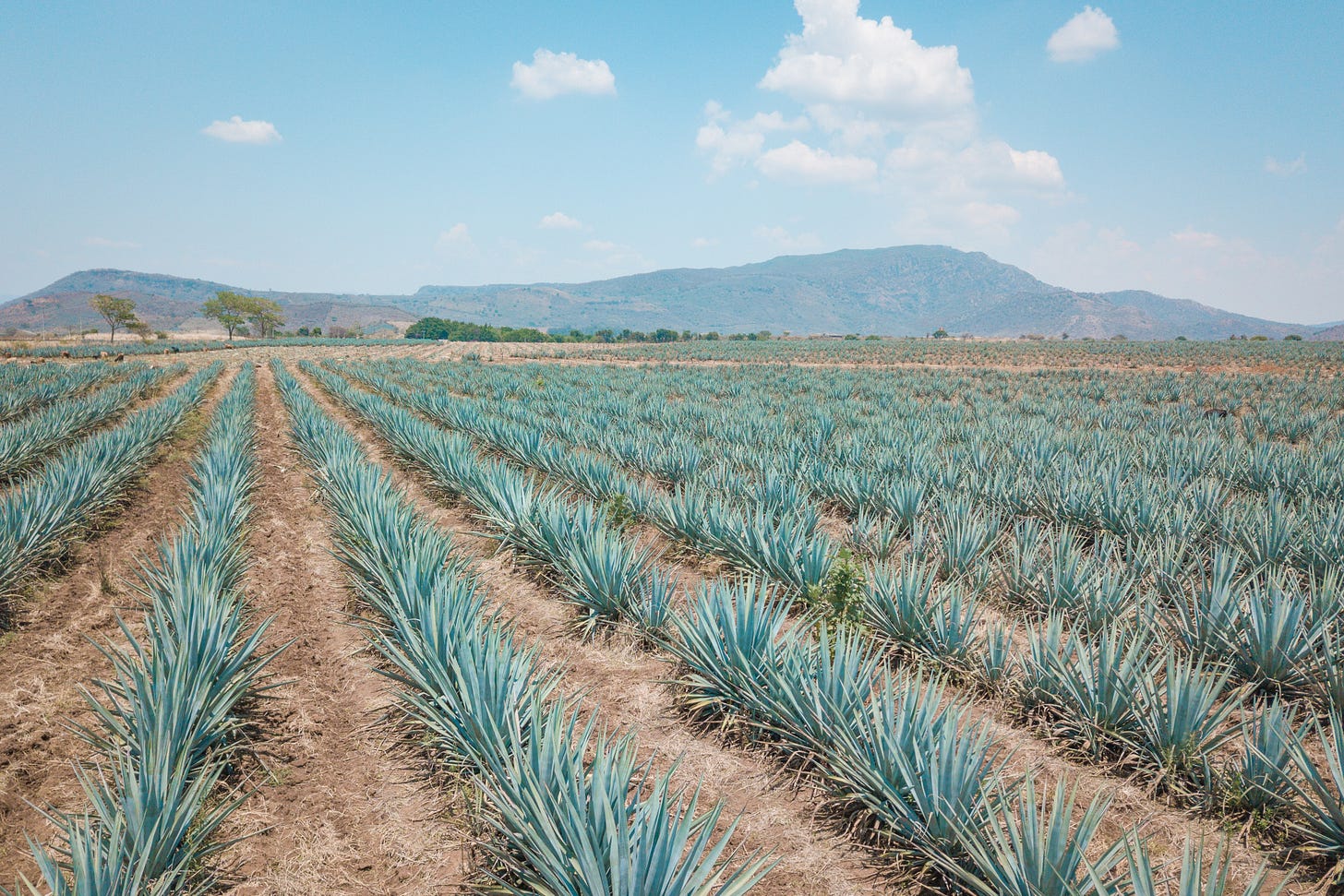
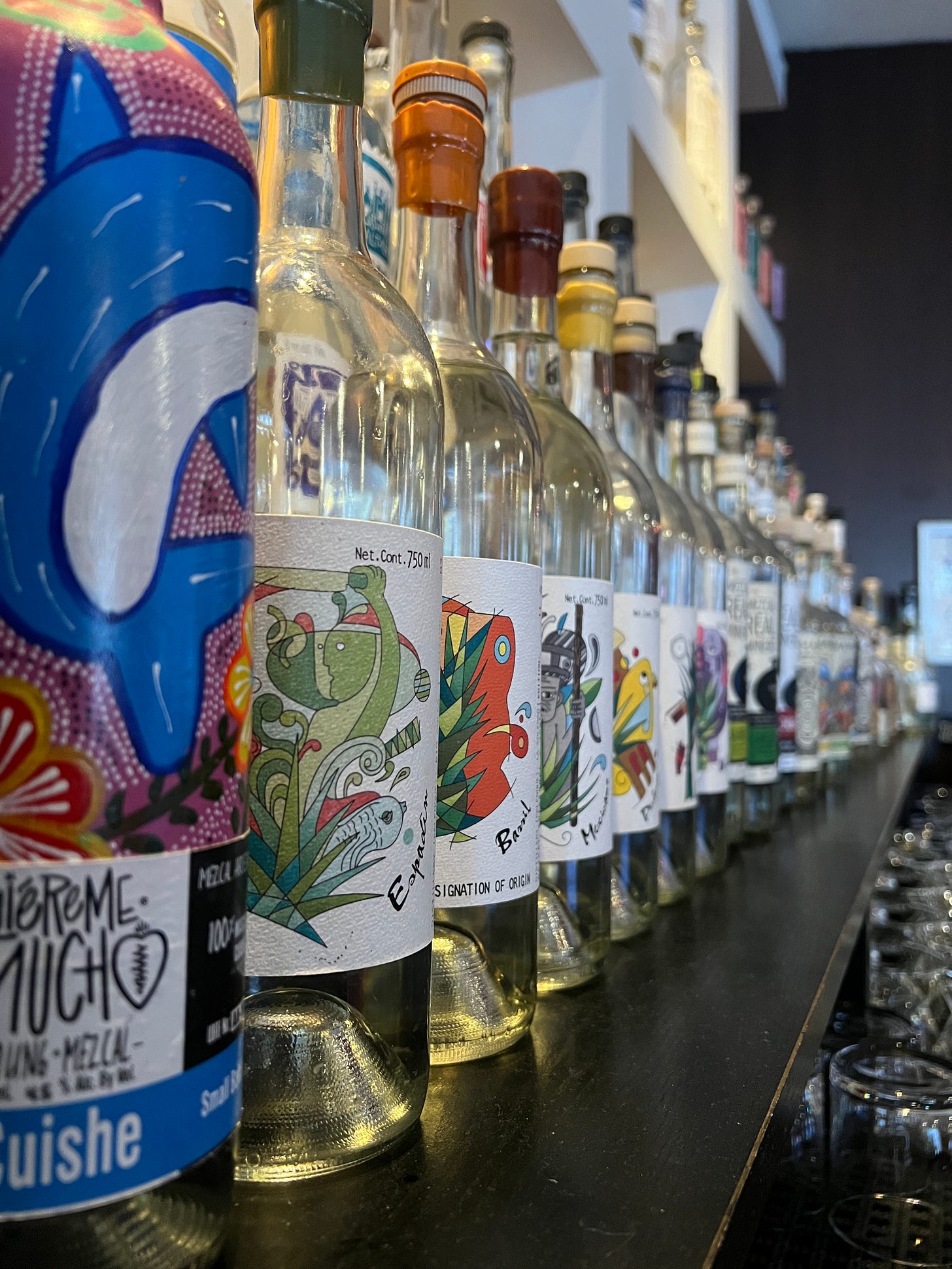
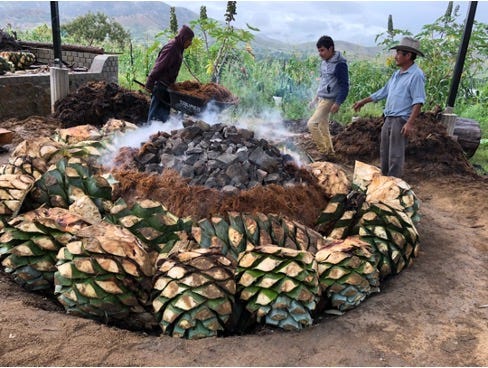
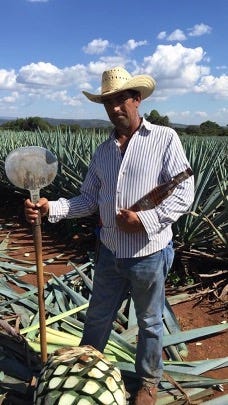
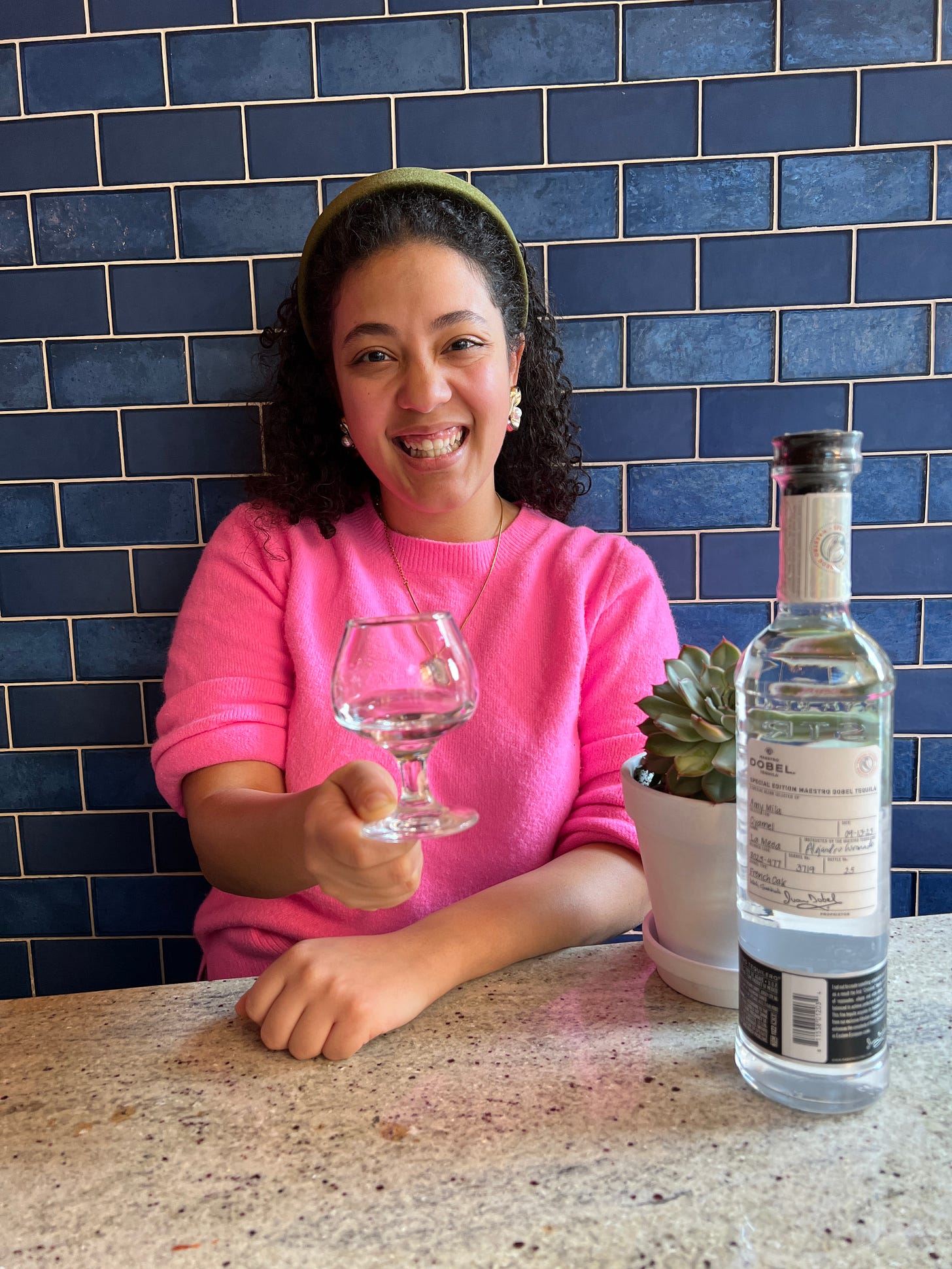
Oyamel is one of the things I miss about living in DC!
Thanks so this piece on mezcal and tequila, and the agaves...I lived part time in Oaxaca for decades, and of course drank mezcal, at local fiestas mostly, with the Zapotecs. Back then it was just local. That smoky taste.....must say the high was way beyond whiskey etc...more like mushrooms